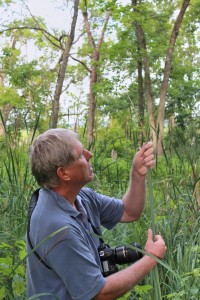Reclaimed wetlands bring back native plants, animals, and rare birds for the eco-win. Listen up:

Where there are sedges, there are nesting opportunities for birds. (G. Sullivan/TWI)
Fifteen years ago, the non-profit Wetlands Initiative bought 3,000 acres of former wetland in Illinois.
The land had been drained and used to grow crops for more than a century. But once they began letting the water back onto the landscape, native plants and animals followed.
Ecologist Gary Sullivan says birds came back in droves. Nearly 300 species have been spotted in the area—including more than 20 out of the 30 that are endangered or threatened in Illinois.
“Things like common gallinules, least bitterns, black terns are there, yellow-headed blackbirds. These are all birds that are just very, very rare,” explains Sullivan.
So grab a pair of binoculars and enjoy some extraordinary bird watching in the restored wetlands of Dixon Waterfowl Refuge, open to the public year round.
Get schooled:
- Understand the value of wetlands, with intel from the Wetlands Initiative
- Learn about volunteer opportunities with TWI
- Find out six reasons wildlife is wild for wetlands, via NWF
The fine print:
- This segment was produced in partnership with Cornell’s Atkinson Center for a Sustainable Future.




